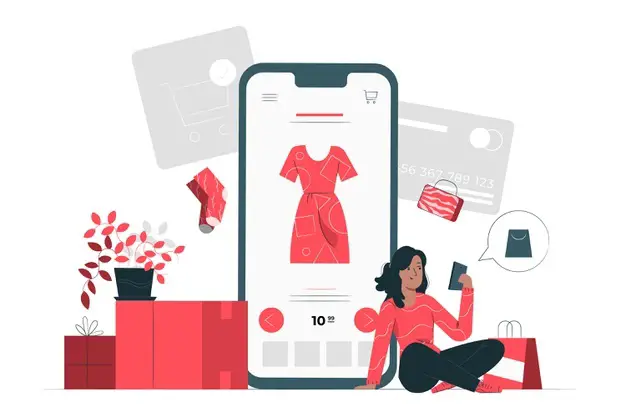An eCommerce business can be one of the most profitable businesses in South Africa. I have built eCommerce stores for a lot of businesses in South Africa and have experience running my own online store. This article serves as a guide on how to start an eCommerce business in South Africa, it requires a lot of things which we will discuss below.
An eCommerce business is very different from your traditional business or retail store, the challenges that face this business are unique. It is way easier to setup and run compared to a traditional retail store but it also has its cons.
Looking for a website?
Give your business the online presence it deserves. Get an incredibly cheap website from Promta.
1) Choose your eCommerce platform
The first step would be to setup your online store, in setting up this store you need to choose a platform. I won’t go into all the details of which platforms are available for eCommerce stores but I strongly recommend going with WooCommerce or Magento.
I would also recommend that you get a professional web developer to setup an online store for you. The cost of an online store varies depending on a lot of factors in South Africa but you should be able to get an online store from as little as R6 500. If you think R6 500 is too much to invest into your business then you are not being serious. A professional web developer should be able to setup your website from start to finish.
Your developer should setup all technical things including payment gateway systems and admin dashboard.
2) Getting inventory for your online store
eCommerce stores are different from traditional retail store. When you go to a traditional retail store you have to see the actual products before making a purchasing decision. You mostly touch the products to get a feel of how they look and operate, that’s not how things work on online stores. All you have is the image.
This is a pro for eCommerce store owners, this allows you to display products you might not have in stock but allow people to buy them. This is commonly known as dropshipping, an online store puts up products that it doesn’t have in stock and when people buy; the store buys from the suppliers.
As an eCommerce store owner, you have to decide on whether you will dropship or have inventory on hand before selling. Both of these have advantages and disadvantages, with dropshipping the main advantage is that you don’t make any losses, even if no one buys from your site and you can put up a wide selection of products.
As an eCommerce store owner, you have to decide on whether you will dropship or have inventory on hand before selling. Both of these have advantages and disadvantages, with dropshipping the main advantage is that you don’t make any losses, even if no one buys from your site and you can put up a wide selection of products.
Having the inventory on hand makes it easier for you to do faster deliveries and gives you the feeling that you are actually running a business. It’s very easy to neglect a dropshipping store because you didn’t invest much into it. However, that’s not the case when you have actual inventory to sell.
Dropshipping allows you to start your online store from a very tight budget, but you will likely give up when things don’t go according to plan. Things rarely go according to plan; you have to be willing to stomach the unpleasant aspects of pursing your goals.
It’s always better to have the actual stock on hand, this may be very costly especially if the product has different variations like colours and sizes. Example, you run an online store selling shoes, shoes come in different sizes and colours. Imagine buying every shoes size for one line of a shoe product. The wiser thing to do would be to have a few in stock and dropship the other sizes.
3) Pay attention to packaging
It’s easy to get carried away with other aspects of this business that you actually forget a very important part that seems insignificant. Your products should be packaged, this is where your boxes and plastics come in.
Make sure that your packaging is branded for the most part. This makes it much easier for your customers to remember your website and it also works as word of mouth. This is another area that dropshipping lacks. Let’s say you dropship a product from Amazon, you wouldn’t want the product to be directly shipped to your customer’s house, because it will be in an Amazon box. Making it obvious that you bought it from Amazon, next time the customer will just go straight to Amazon.
This means you have to find a way to get around that and that means shipping the product to your warehouse then repackaging it and shipping it to the customer. This can end up taking a lot of time and customers are just not that patient.
4) Marketing your eCommerce business
This is the most important and difficult step; you need to be able to properly market your online store and you need money for this. Don’t depend on advertising to your friends and family, that won’t cut it, all you will get is compliments but no sale. You need to have money to spend on advertising.
You have two great options when it comes to advertising for an eCommerce business, you have Facebook and Google. Both of these have their pros and cons, Facebook is way cheaper than Google but Google will likely get you a sale faster.
Facebook runs an advertising platform; it allows you to advertise to their 2 billion users or rather 38 million users (South Africa). There are over 5 billion search queries on Google per day, Google allows you to target ads to people making specific searches. Let’s say for example you want to run an advert for an iPhone 8, you could target all people searching for “iPhone” or “iPhone8” or other related queries. Your advert will display before the actual search results.
Both of these are very powerful platforms, Facebook is cheaper but it has only one disadvantage; people don’t log in to Facebook with a credit card on their hands. People go to Facebook to socialize. On the other hand, a person searching for “cheap iPhones” has an intent to buy. This is why Google ads are expensive.
However, the advantage that Facebook has over Google is the conversion rate, almost 10% of people who come to your site from a Facebook ad will be converted to customers. This is in contrast with 3% from Google ads. The standard lead conversion rate is 2%.
It’s best to test both of these platforms to figure out which one works best for you, most eCommerce stores use both of these platforms. Facebook generally charges around R1 per link click while Google can charge up to R20.
Please follow us on Telegram https://t.me/mysouthafrica for more awesome content




Celeste
24 Mar 2021Good day,
Thanks so much for the info.
I have a small business with my husband and have developed an informational website and am now looking to convert it into an E-commerce site. We are not vat registered as we are still quite small and have not covered our investment cost. Can you explain if there are any other tax requirements with being online, other than our company already being tax registered at SARS (We do have a tax number).
Thanks so much.
Kind Regards,
Celeste